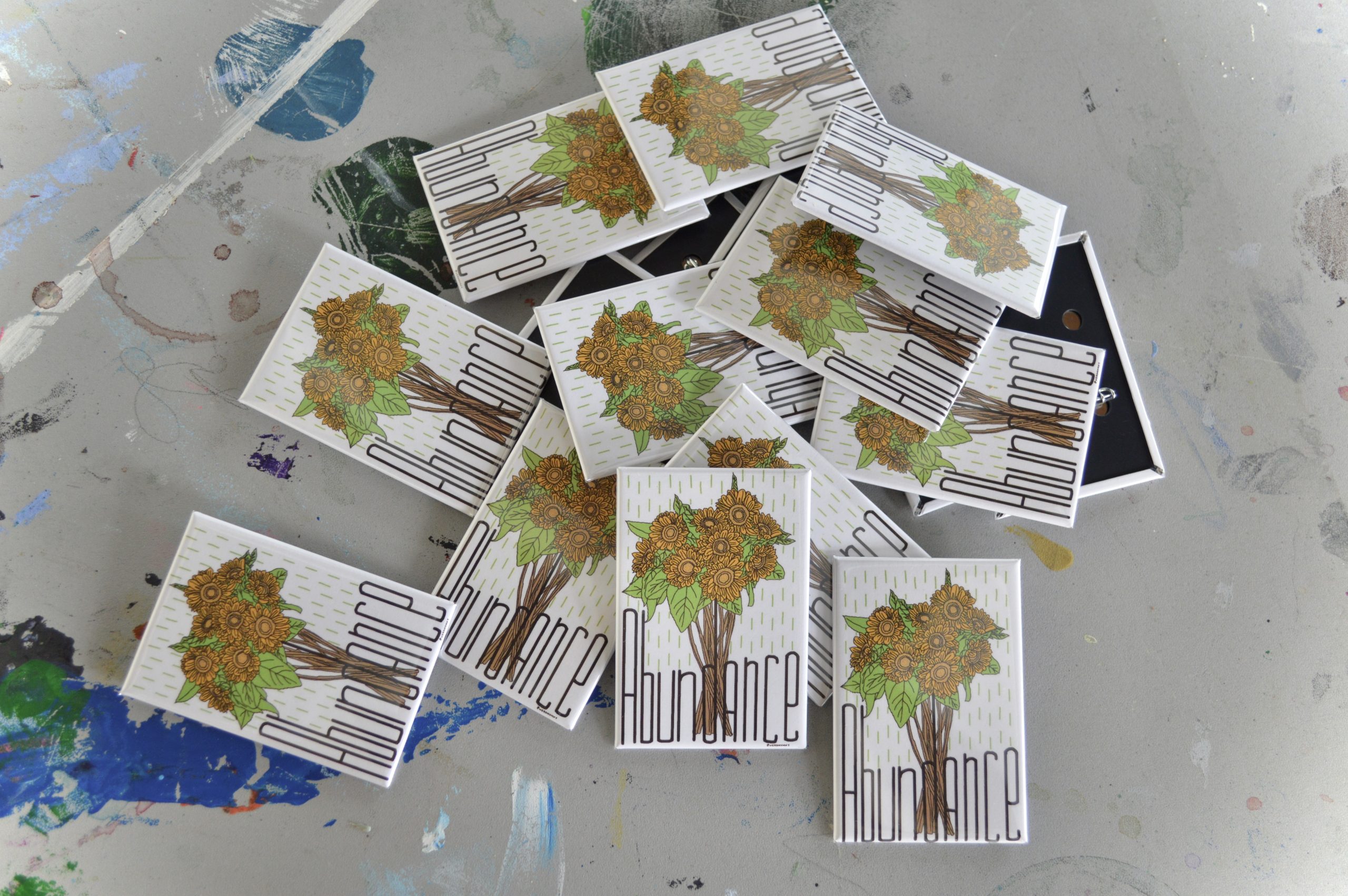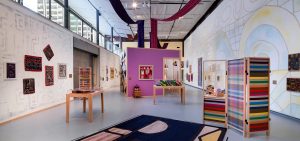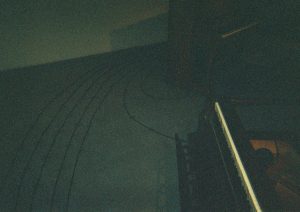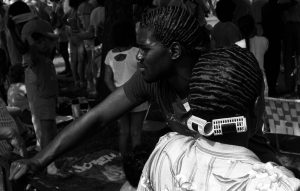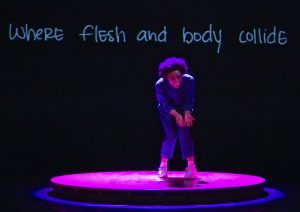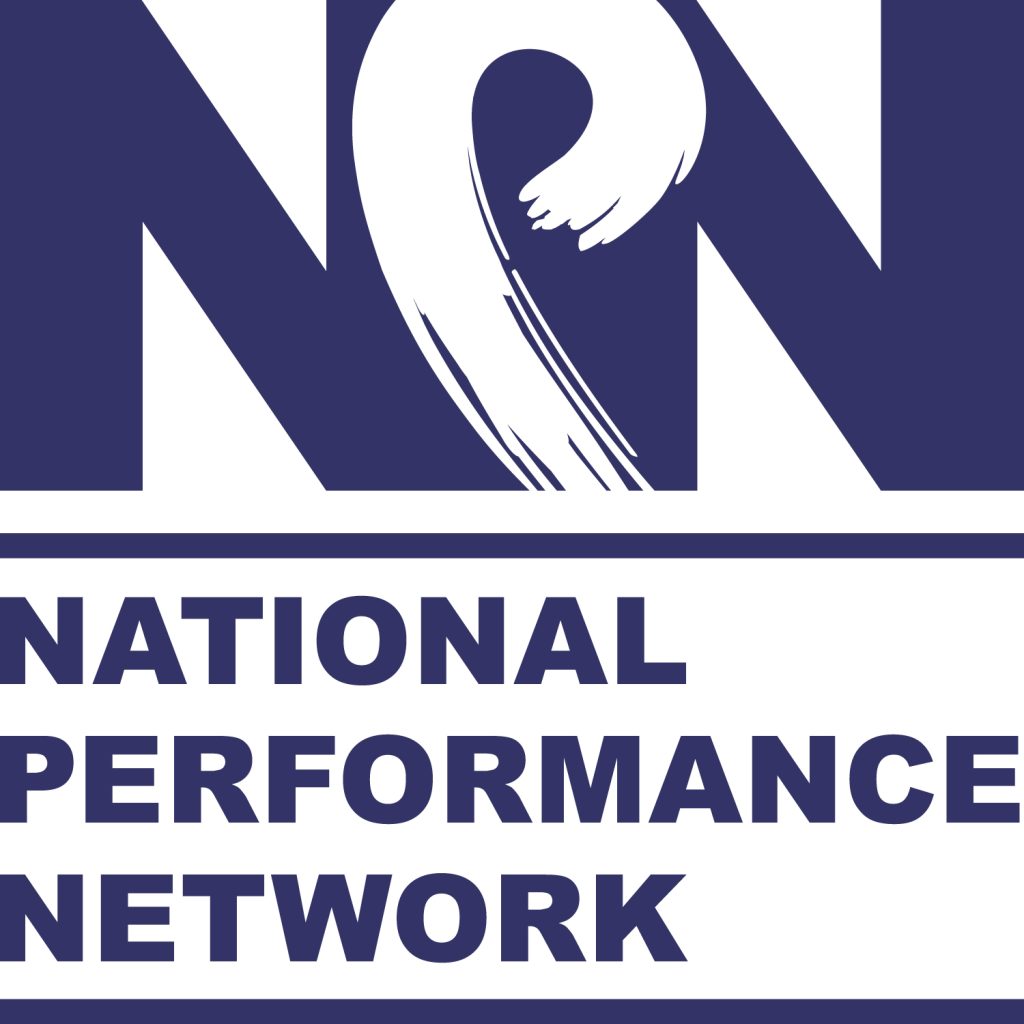
This piece was created through Sixty Inches from Center and the National Performance Network’s (NPN) Visiting Critic Program. This new partnership offered an opportunity for a Chicago-based critic to attend a three-day conference hosted in Chicago—which brought together NPN’s 57 performing arts partner organizations— and participate in discussions about the current state of the performing arts field with Chicago artists, arts leaders, and national presenting arts orgs, and share their reflections in an essay commissioned for Sixty. NPN is a national network of artists and organizations committed to advancing racial and cultural justice through the arts.
It’s Tuesday April 16, 2024, when news spread across cyberspace about the Supreme Court abolishing the right to mass protest in Louisiana, Mississippi, and Texas. A mixture of panic, abhorrence, and dispiritedness infiltrate my demeanor as I arrive to the second day of the National Performance Network’s conference at the Hyde Park Art Center in Chicago. ‘Breaking news’ can have an unpredictable impact on people that rely on social media for news while they’re (also) expected to complete objectives at work, pay bills on time, vote, tip at least 20%, recycle and remember friends’ birthdays. However, the facts—Haiti continues to be mischaracterized or overlooked by mass media despite having to pay reparations to France in exchange for their independence (since 1825); US tax money directly funding the genocide in the Congo, Sudanese civilians are struggling to find asylum as war persists and at least 35,000 Palestinians have been killed, 67,000 others injured in Israeli strikes on Gaza since October 7, 2023—are irrepressible.
The conference began the prior day at the Study, a hotel that seemingly sprouted from nothing in Hyde Park, similar to the ongoing construction of the Obama Presidential library, which resembles a military bunker more than a compound for research, learning, or intergenerational togetherness. 70 people from all over the United States consolidated into three sprinter buses and headed west. Through eavesdropping, I learned that this is the first in-person conference that NPN has hosted since the world paused from COVID-19.
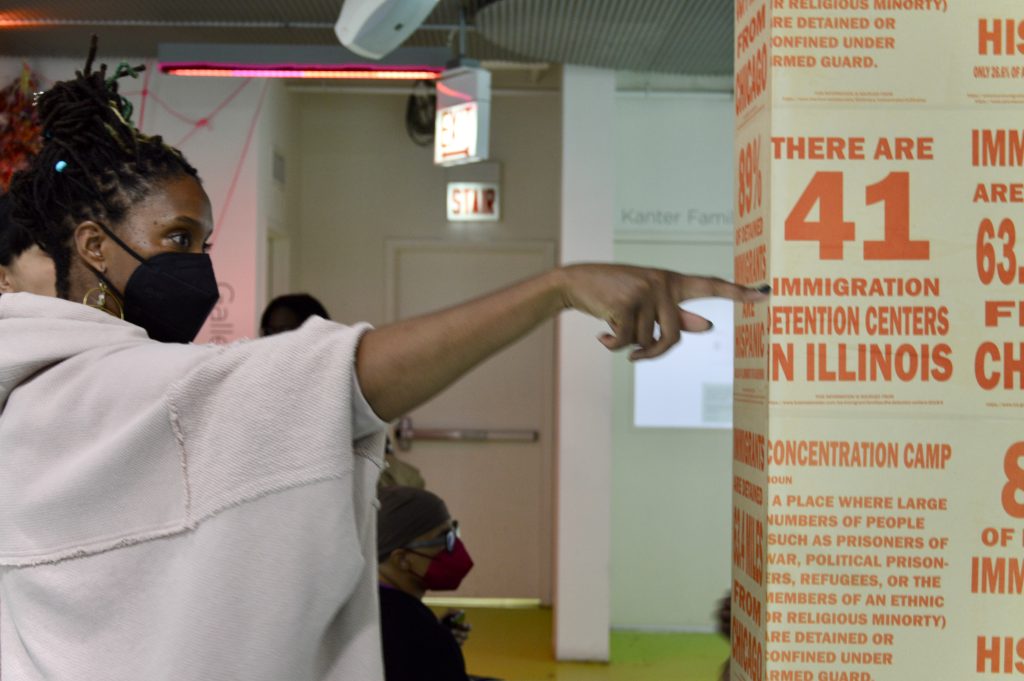
Our first stop was Marquette Park, just west of Kedzie Avenue, located in the Chicago Lawn neighborhood. A team of smiling faces greeted us: Rami Nashashibi, Alia J. Bilal and Ahmad Jitan. They’re representatives of IMAN, Inner-city Muslim action network, “a community organization that fosters health, wellness and healing in the inner-city by organizing for social change, cultivating the arts and operating a holistic health center.” We are then led to the Martin Luther King Jr. Living Memorial where Alia contextualized the neighborhood: 57 years ago Chicago Lawn was a predominantly white, Lithuanian, working-class neighborhood until Black folks began moving in (which implied property value declination, then catalyzed as a fear tactic to further segregate neighborhoods) which led to many white families selling their homes and relocating out of the neighborhood. On August 5, 1966, Dr. Martin Luther King Jr. and approximately 700 organizers, religious leaders and community members marched to Chicago’s Marquette Park as a part of the Chicago Freedom Movement to protest housing segregation. During this effort Dr. King was assaulted.
This demonstration and assault were the impetus for King’s diagnosis of Chicago’s infection festering with racism and segregation. Hearing this history shared with visitors made me retreat into myself with embarrassment and shame; some of my city’s worst parts were on display for people who had never been here before. Although that was 58 years ago, my discomfort—from personal lived experiences plus the assumption that descendants of those violent protesters still walk amongst us here in Chicago, perpetuating the same violence on or offline without consequence—is uncontainable. I looked throughout the crowd to see how Alia’s information landed with guests—I saw a few people wiping their eyes, some stood still with their heads down and others appeared unfazed by the information entirely.
Unveiled in 2016, this is the only memorial in Chicago dedicated to Dr. King and it took a decade to finalize, both of which are disappointing but not surprising facts. What inspired me, though, was how it was designed by local high school students, community organizers and religious leaders and then sculpted from clay by those same people. Protest efforts from the past few years have elicited Americans to interrogate our relationship to memorials and monuments, who we canonize and why. But also, how these memorials are produced and how much input do communities have in the process, sourced materials and placement. This installation process is a reminder that it’s up to the people to imbue value into where they live, build community, support local businesses and organize on behalf of community interests. We departed the memorial after we paid our respects through dance and an oral exercise where each of us vocalized what we intended to impart in our collective circle, setting the precedent for the rest of our time with IMAN liaisons. Harmony.
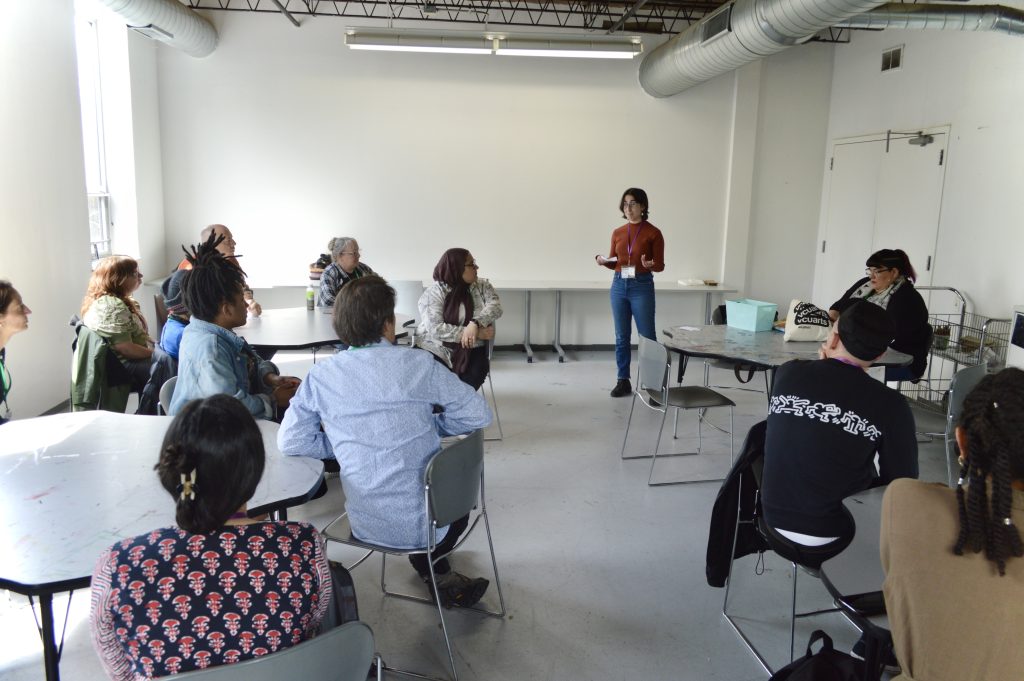
Our next stop on the IMAN tour is a few blocks east to 63rd and Racine at the Go Green Community Fresh Market, a corner store with fresh produce. IMAN ambassador, Ahmad Jitan explained to the out-of-town guests that corner stores are cultural epicenters for neighborhoods in major cities; they’re where one can buy condoms, lottery tickets, beer, lollipops that resemble watermelon slices, Flamin’ Hots and toilet paper. However, it’s seldom that you can buy a head of lettuce, an avocado, or lentils. That’s where Go Green comes in, providing a selection of fresh produce, locally-sourced products, prepared meals, and familiar treats like chips and Jones Soda. The store is bright and upon entering we are warmly greeted by staff before being led to an outside pavilion where we met HeavyCrownz, a self-identified farmer, artist and musician born and currently based in Englewood. “Every great thing starts with a seed,” says, HeavyCrownz as the sun sat directly above us.
Despite numerous efforts to depict Englewood as one-dimensionally destitute, crime-stricken, and hopeless from local and national media coverage, Englewood perseveres. It’s evident in the way HeavyCrownz freestyles as Rami drums. It’s evident in the way Rami talks about his dream for the CTA’s currently inoperative Racine Green Line stop. It’s evident after we’re introduced to Maurice, the general manager of Go Green, former manager of Englewood’s Whole Foods that suddenly closed after 6 years without any significant notifications for the staff or community. Yet, Maurice welcomed us with a smile and gesture that suggested Go Green Fresh Market is where he was meant to be all along.
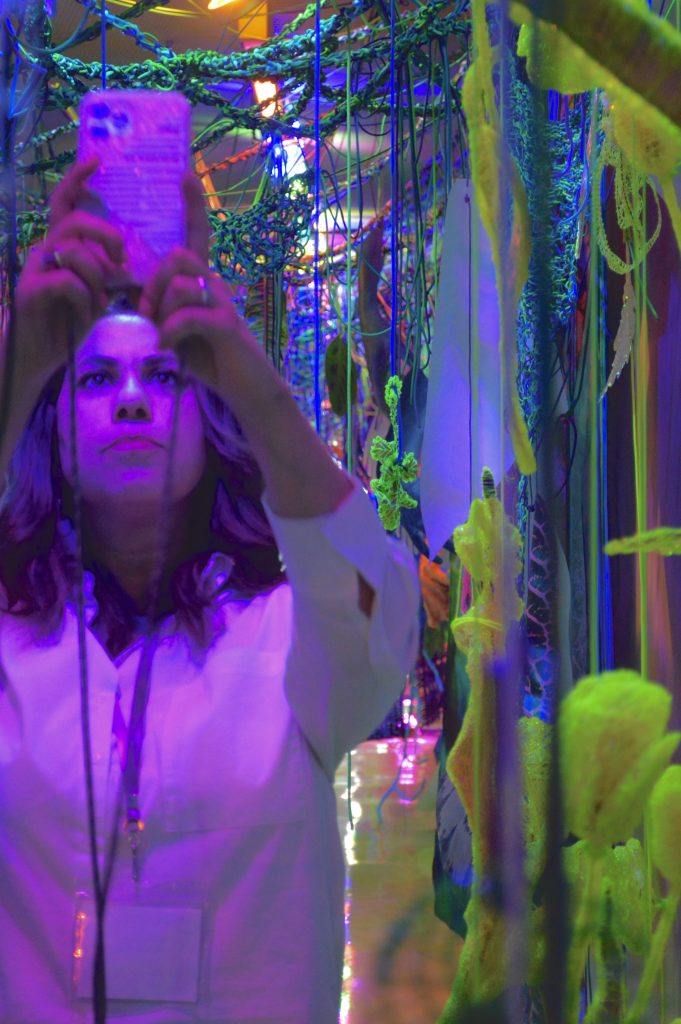
On the ride to our next destination, Ahmad Jitan passed around a recently published book of poetry by Fady Joudah, a Palestinian-American poet, reminding us that we’ve all got our part to play in collective sustained liberation. We arrived at the Beloved Community Ceramics Studio, just a few blocks west of Go Green, and are greeted by Binta Diallo, associate director of arts and culture and my former classmate of many years. This ceramic studio appears to be the first of its kind on the South side: a studio that brings local artists and community members to collaborate on ceramic works that are installed around the community, one of which is the Martin Luther King Jr. living memorial we saw earlier at Marquette Park. “In the Islamic faith we believe that our bodies were made from clay… in a sense, being able to work with the clay is an active artistic practice of returning to self”, states Binta. The emphasis on “living” resonated differently for me afterwards. The studio is lined with film from the historic 1966 march, all photographed by Bernard Kleina. The most haunting photograph was of an angry white man holding up a picket with a racist illustration of Black feet that read: “Tired? Go home!” Our evening concluded with a delicious dinner and time to unpack all that we saw with each other including an art show highlighting the importance of solidarity.
The second day of the conference began with a few icebreaker activities before we broke off into groups to hear from different Chicago-based art orgs that combine art, performance and activism into their mission statements. A few participants included representatives from A Long Walk Home Chicago, Enrich Chicago, Hyde Park Art Center, Red Clay Dance Company and the Chicago Dancer Pay Transparency Project. Enrich Chicago’s co-director, Nina Sanchez prompted guests with the question: what does it look like when we center community care in art spaces? Many of the exercises required guests to utilize their entire bodies and voices to convey the types of changes they wished to see not just in the industry but, society. Bodily gestures aimed to represent equitable pay, intergenerational dialogue, justice and world building all began to sustain a rhythm once we disavowed ourselves from the fear of failure and optics. I appreciated the moments of joy and laughter shared between having difficult conversations about inconsistent funding and the uncertain future many artists and the organizations that support them face in the United States. After an immersive day of physical and mental exercises, we all fellowshipped over wine and small bites. It was there I met more people that traveled in for this conference. Quite a few guests talked about how impressed they were with Hyde Park Art Center’s “Artist Run Chicago Grant”—an initiative that’s regranted 1 million dollars since its inception in 2020. This made me proud.
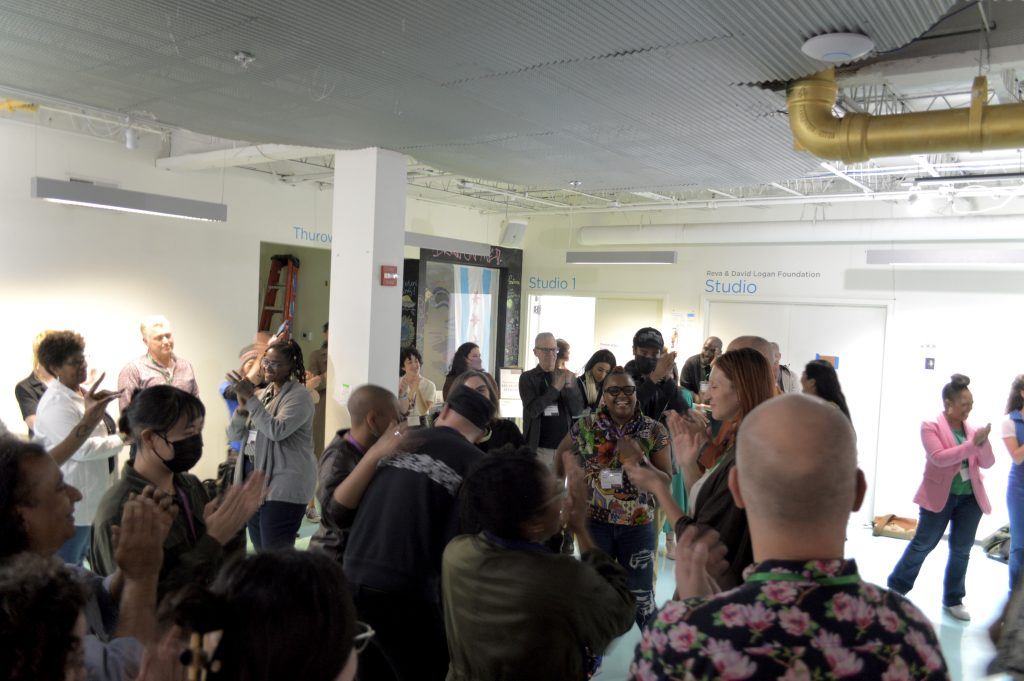
In recent years, ‘performance’ or to be ‘performative’ has become pejorative and synonymous with inauthentic or insincere. And while I believe that performers can be cynical, these two days spent with NPN have reinstated my belief that performance is an ongoing protest effort, commentary on our world, our values and our vision for the future. Failures are inevitable but it’s clear to me that the people in my city are committed to doing the work for the long haul. At some point during the conference, I received three pins by William Estrada that read “Practice Healing”, “Ancestral Memory”, and “Abundance.” Those messages are a commitment to the future.
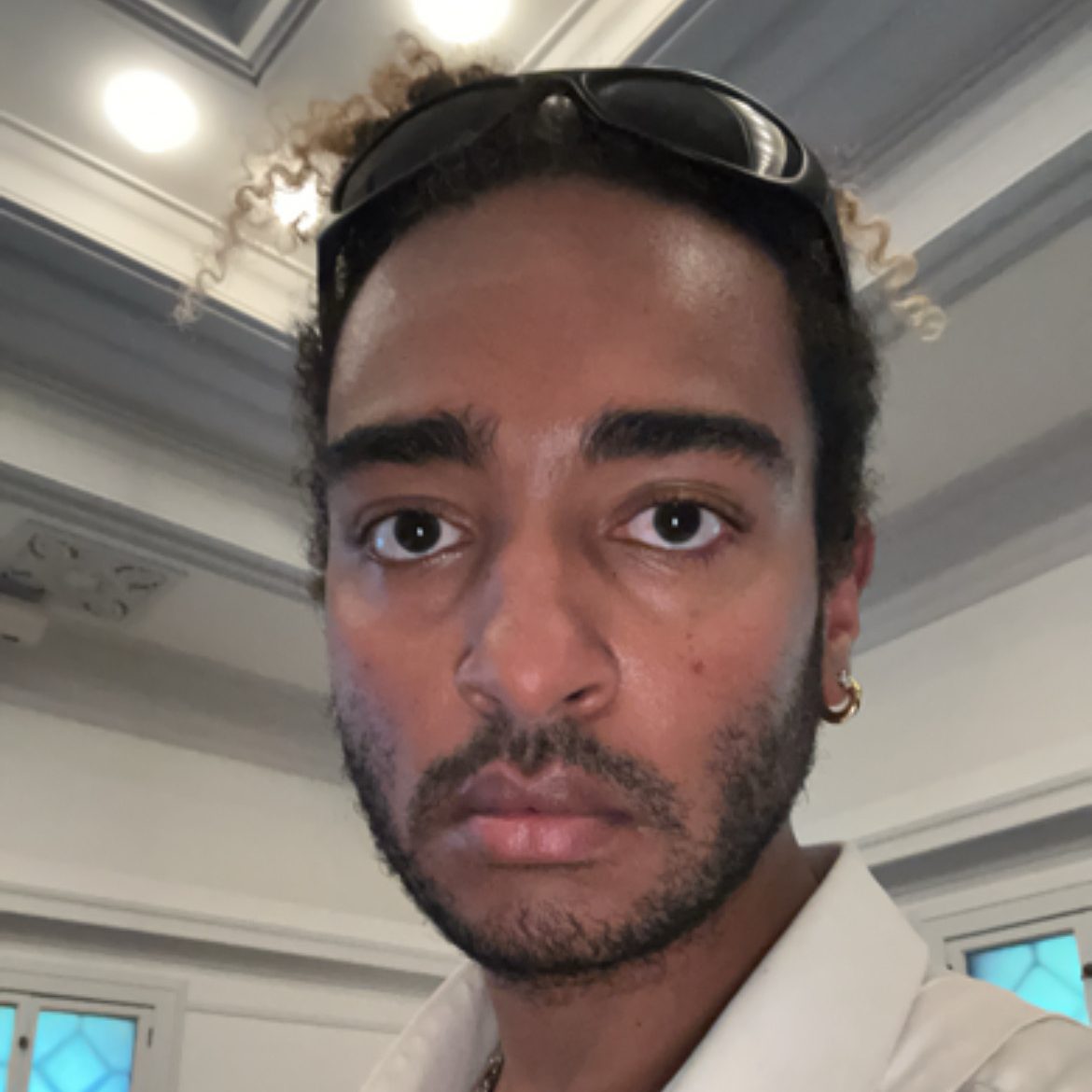
About the author: Jared Brown is an interdisciplinary artist born in Chicago. In past work, Jared broadcasted audio and text based work through the radio (CENTRAL AIR RADIO, 88.5 FM), in live DJ sets, and on social media. They consider themselves a data thief, understanding this role from John Akomfrah’s description of the data thief as a figure that does not belong to the past or present. As a data thief, Jared Brown makes archeological digs for fragments of Black American subculture, history and technology. Jared repurposes these fragments in audio, performance, text, and video to investigate the relationship between history and digital, immaterial space. They have published writing in Sixty Inches from Center, CULT CLASSIC Magazine, the Chicago Reader, Press Press and Tru Laurels. Jared Brown holds a BFA in video from the Maryland Institute College of Art and moved back to Chicago in 2016 in order to make and share work that directly relates to their personal history.
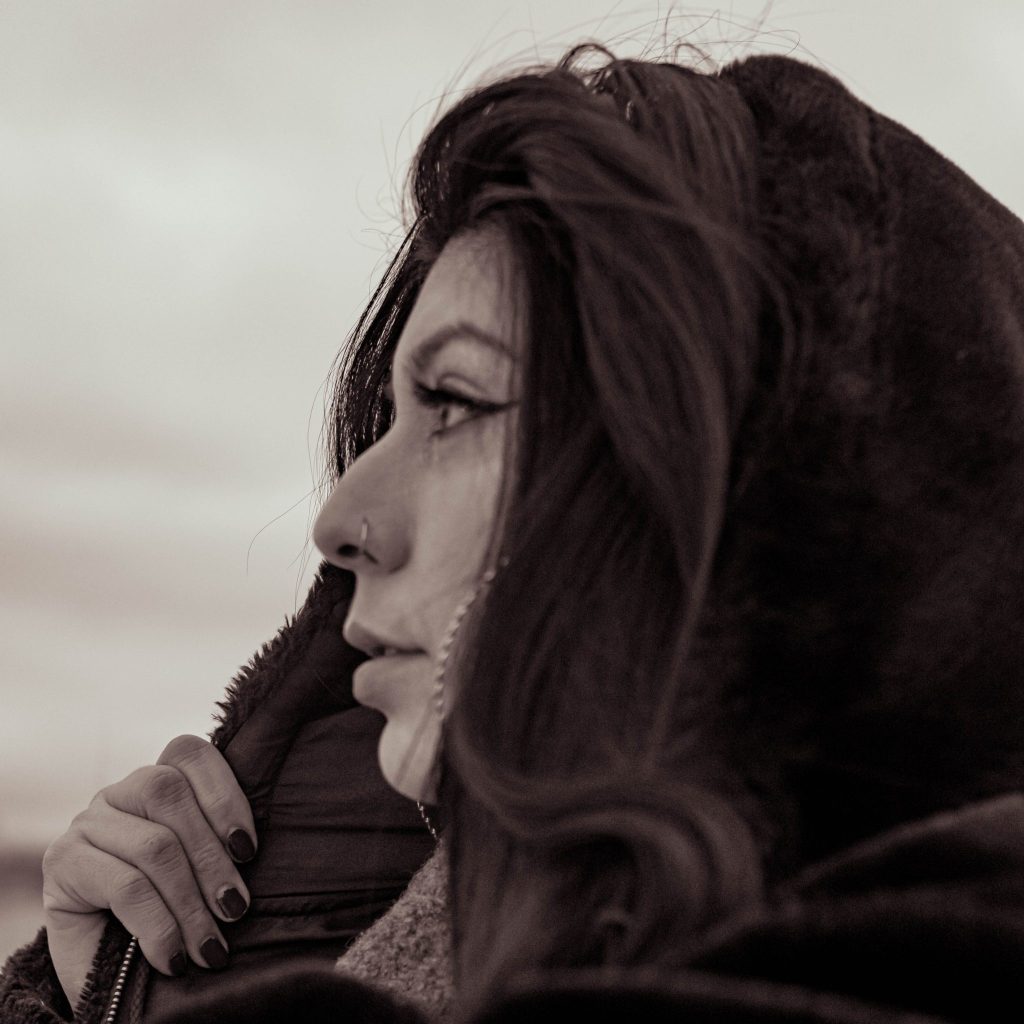
About the photographer: Luz Magdaleno Flores is Sixty’s Bilingual Editor. She is a Chicana art curator, poet, textile artist, content creator, and fotógrafa based in Pilsen by way of Oxnard, California, also known as DJ Light of Your Vida. As a content creator and layout designer she has published Tiempos Oscuros Foto Magazine, La Pera Chapbook, Bajito & Suavecito Foto Zine, Cultura Mexicana en Pilsen y La Villita Chicago (winner of the first place photo book 2016 at Roosevelt University), ¿SERIO? Zine, and edited the last six Brown and Proud Press Anthologies. Her words have been featured on the Chicago Reader, South Side Weekly, Canada’s Broken Pencil Magazine, Xicanation.com, and Reverb LP. @lightofyourvida
